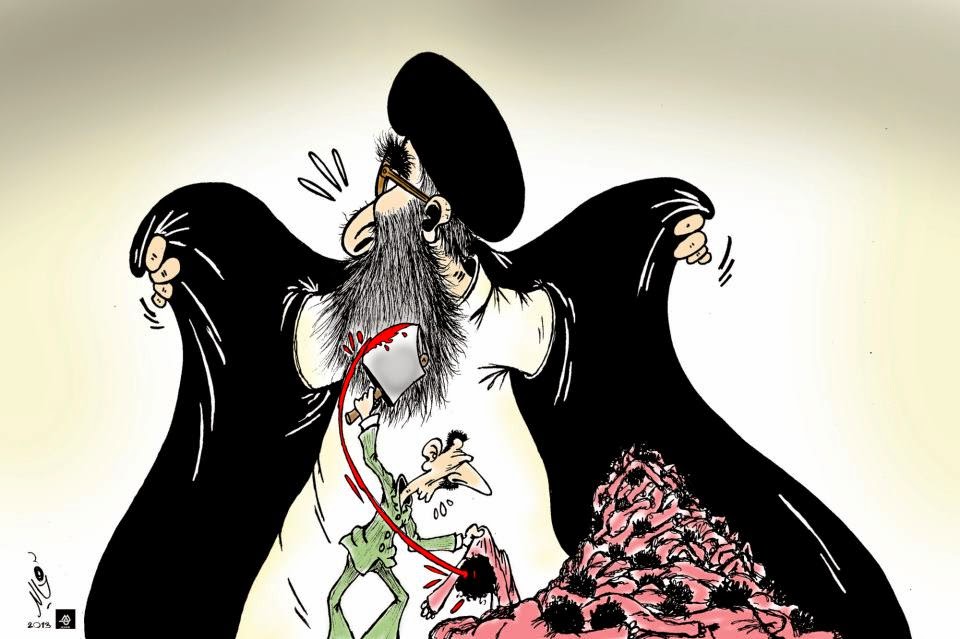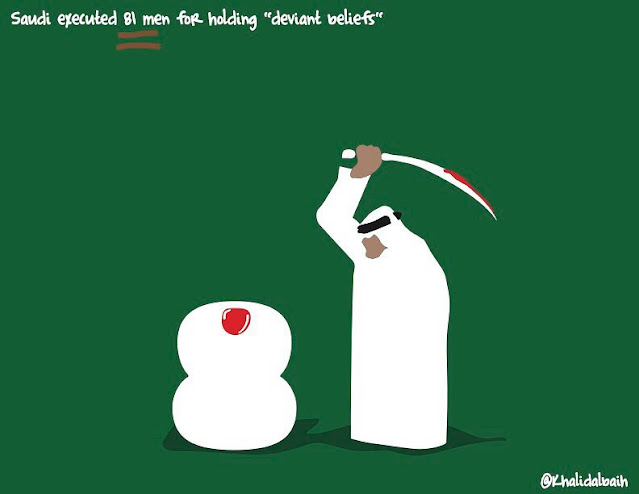Of Necessity and Destruction
 |
| Photo: Abdelrhman Zin Eldin, November 18, 2013. |
While protesters were busy destroying a new memorial at the Tahrir Square, the artists were no less occupied in the Mohamed Mahmoud Street demolishing their own works and those of their colleagues.
Demolishing is perhaps not the right word here. Camouflaging they call it in the vein of what the military does. Dazzle paint in pink, hiding the artworks just as the truth is hidden in Egypt by its men in power. Add to that that the artists have taken on the very action of their adversaries, a demonstration of who is has the upper hand.
 |
| Photo: Abdelrhman Zin Eldin, November 19, 2013. - the day after, job done. |
 |
| By Ammar Abo Bakr, Photo: Abdelrhman Zin Eldin, November 12, 2013. |
Ammar Abo Bakr's murals were mutilated yet again last week and this time taken to a state that was somehow back to basics. Even their first destruction by black paint is removed, so that we see all four states of the mural in one and with a presence as strong as ever. Not least from the fact that the middle girl's eyes and the tip of all three wings are untouched. These are murals that by now have layers enough for a dissertation on present day Egypt, the struggles, aims and interests, fears and anger, and the political, cultural and sociological implications of it all.
 |
| By Ammar Abo Bakr, Photo: Abdelrhman Zin Eldin, November 12, 2013. |
So a mural with such a thing as opponents is in this sense a true member of the arts.
The more so in this case with opponents ready to make a spectacle of killing off the surface. It is a visual battle with all parties acutely aware that the visual winner will be the overall winner and from the interaction has come not just the cultural importance, but new artistry too.
 |
| By Abood and friends. Photo: Abdelrhman Zin Eldin, November 11, 2013. |
 |
| By Abood and friends. Photo: Abdelrhman Zin Eldin, November 11, 2013.
The Protester as the new Thinker
|
 |
| By Abood and friends. Photo: SOoOti eYes, November 15, 2013. Hugin and Munin in another feathery, - if their colors are symbols of good and bad, it can never be a good sign when both are wearing gas masks. |
All in all there is a feeling of a greater need in a talent not quite unfolded in spite of his grandeur. And so, the strife, the insistence and the gorgeous colors are instantly recognized in the mural today, but here lived to the full in the the mural by Abood and friends and I felt such a wish that Willumsen had been able to take part on the streets of Cairo right now. He would have loved to find an answer to his artistic need, the indignation behind and the danger as part of the painting process - and with a height close to 2 meters, he would not even have needed a ladder most of the time.
 |
| By Abood and friends. Photo: Abdelrhman Zin Eldin, November 11, 2013. |
 |
| By Khokha Ahmad. Photo: SOoOti eYes, November 15, 2013. |
There has been what he calls an internal pressure not unlike what took place in the Soviet Union where the social realism was treasured while the artistic freedom was suppressed as dangerous and at best unnecessary.
And yet, if the effect was to be solely political, it would not be so difficult to write this while distracted by the gaze of the lion to the left and above of this text. Proud and resting in the knowledge of its own worth even when confronted with the military in the shape of the serpent. It is created through two layers of yellow, the one smaller and darker than the first, creating an understanding of three dimensions, with an intricacy in the pattern to create movement in the fur that disproves any claim of a "lion = symbol of Egypt"-simplicity.
 |
| Khokha Ahmad (the lion) and Abood and friends. Photo: Abdelrhman Zin Eldin, November 11, 2013. - the lion at an earlier stage with the evil of SCAF, the Supreme Council of Armed Forces. |
We all know instances of bad political art, but the author, former prisoner of Auschwitz and dissident of the Communist Hungary, Imre Kertész, has stressed how it became one of the characteristics of the 20th century to separate politics from culture. They became each other's enemy rather than of the same source. And politics freed from culture becomes destructive, Kertész continues, because values are destroyed and taken over by ideologies.
 |
| Photo at www.facebook.com/Walls of Freedom: Street Art of the Egyptian Revolution, November 19, 2013. |
- since the photo was taken, the military has answered back, blocking the street with tanks. And the artists, they are working on the new canvas created by the pink dazzled surface. Ammar Abo Bakr did this today, the martyred child, Sayed Khaled:
 |
| By Ammar Abo Bakr. Photo: Mohamed Emad El-Din, November 23, 2013. |
ETA: The mural by Ammar Abo Bakr was finished last night:
 |
| By Ammar Abo Bakr. Photo: Mo ElMalt, November 23, 2013. |
All artworks and their photos shown are courtesy of their artists and photographers and must not be reproduced without their permission.




